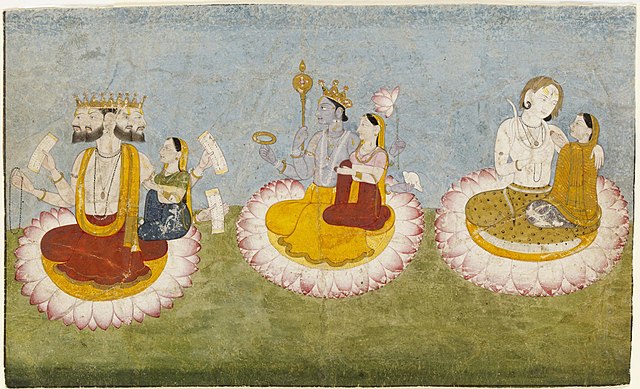The Trimurti is the trinity of supreme divinity in Hinduism, in which the cosmic functions of creation, preservation, and destruction are personified as a triad of deities. Typically, the designations are that of Brahma the creator, Vishnu the preserver, and Shiva the destroyer. The Om symbol of Hinduism is considered to have an allusion to Trimurti, where the A, U, and M phonemes of the word are considered to indicate creation, preservation and destruction, adding up to represent Brahman. The Tridevi is the trinity of goddess consorts for the Trimurti.
Shiva (left), Vishnu (middle), and Brahma (right)
Trimurti relief at the Hoysaleswara temple in Halebidu
The main three towers of the 9th century Prambanan Trimurti temple complex, the largest Hindu temple site in Indonesia
Brahma and Saraswati (left) Vishnu and Lakshmi (middle) Shiva and Parvati (right)
A triple deity is a deity with three apparent forms that function as a singular whole. Such deities may sometimes be referred to as threefold, tripled, triplicate, tripartite, triune, triadic, or as a trinity. The number three has a long history of mythical associations and triple deities are common throughout world mythology. Carl Jung considered the arrangement of deities into triplets an archetype in the history of religion.
The Greek goddess Hecate portrayed in triplicate
Shiva (left), Vishnu (center), Bhrama (right) are referred as Trimurti, the central deities of Hinduism.
The Trimurti with their consorts.
A first-century BC denarius (RRC 486/1) depicting the head of Diana and her triple cult statue







